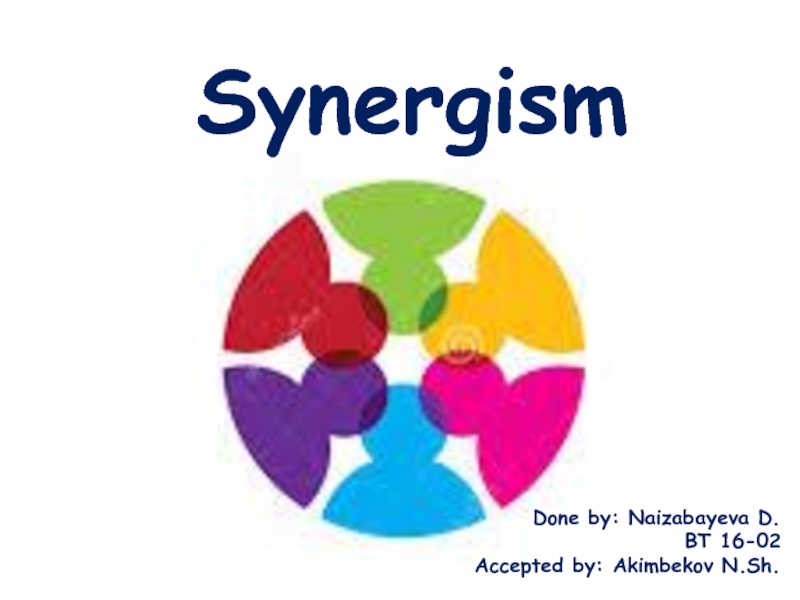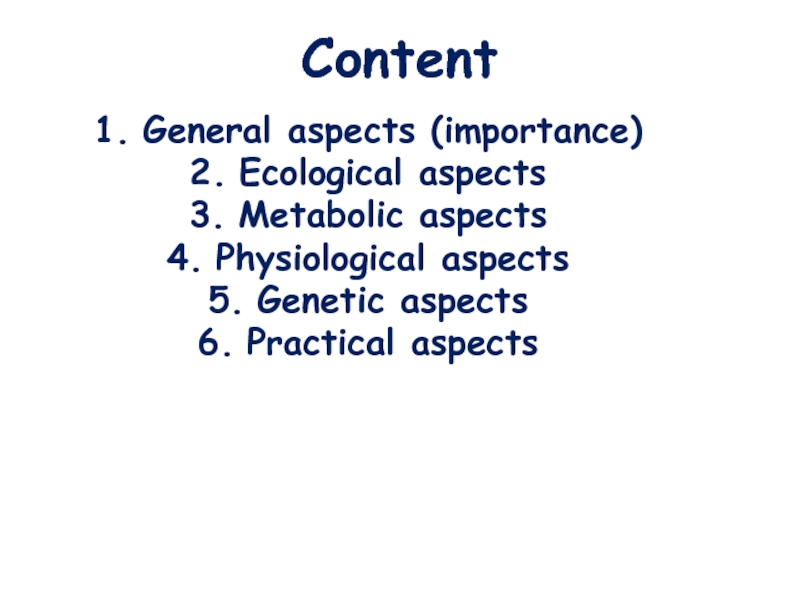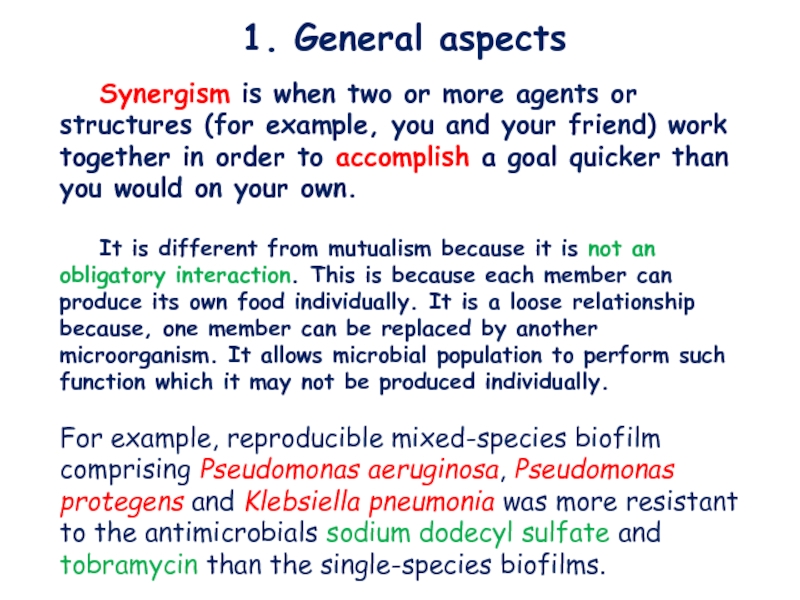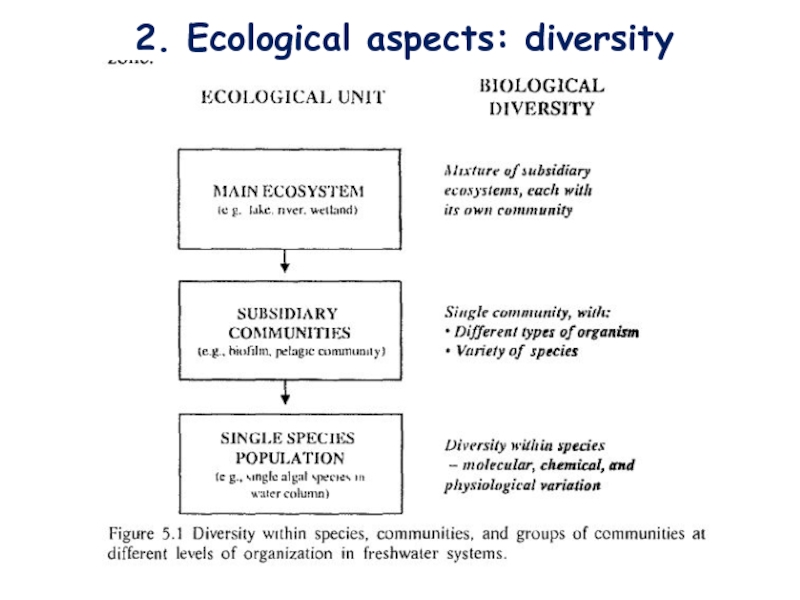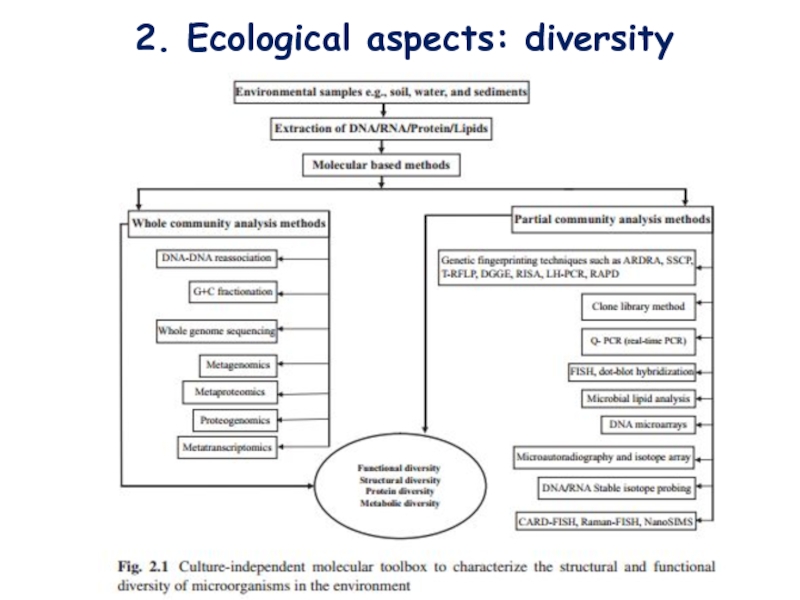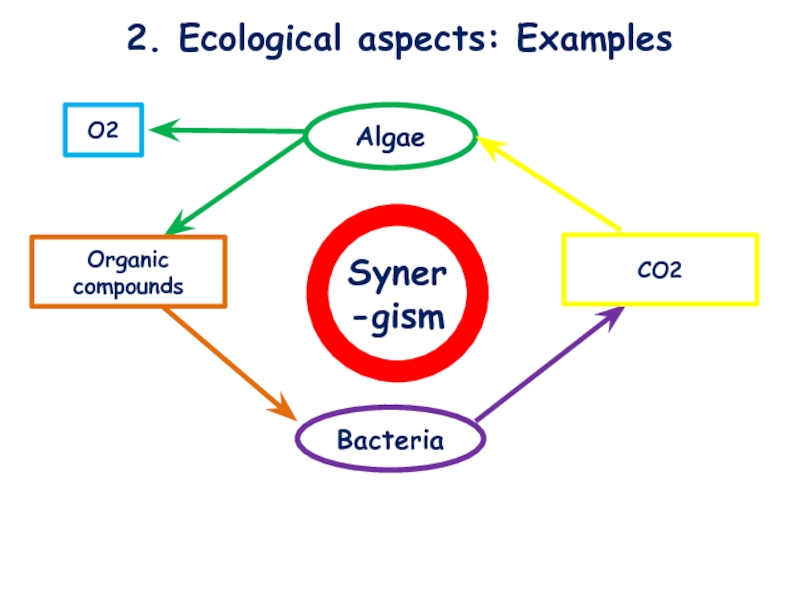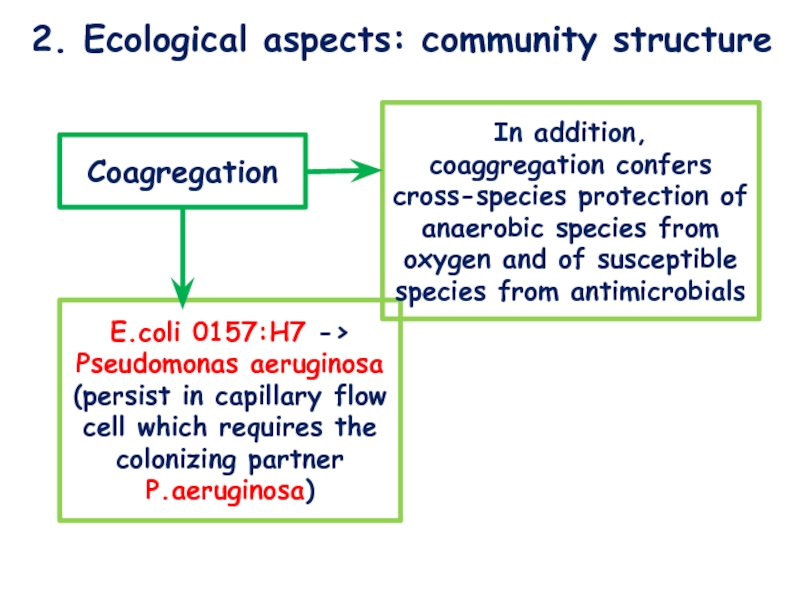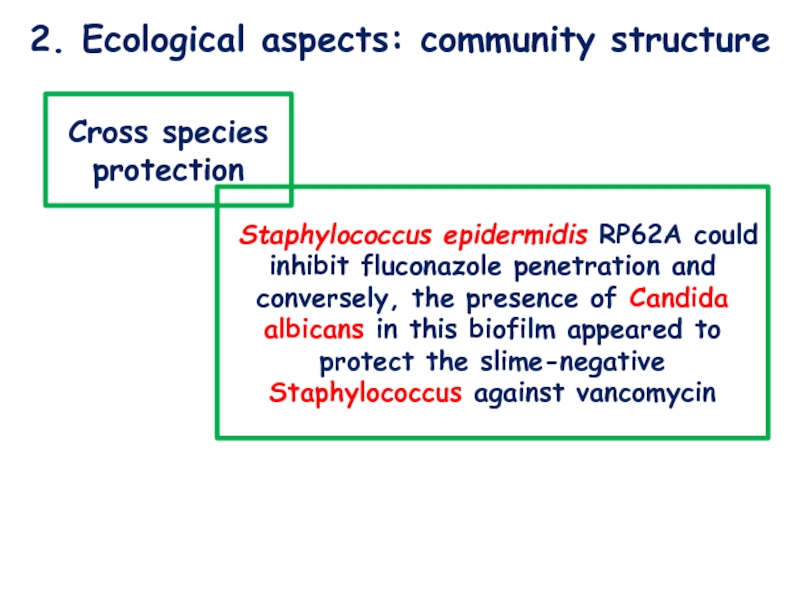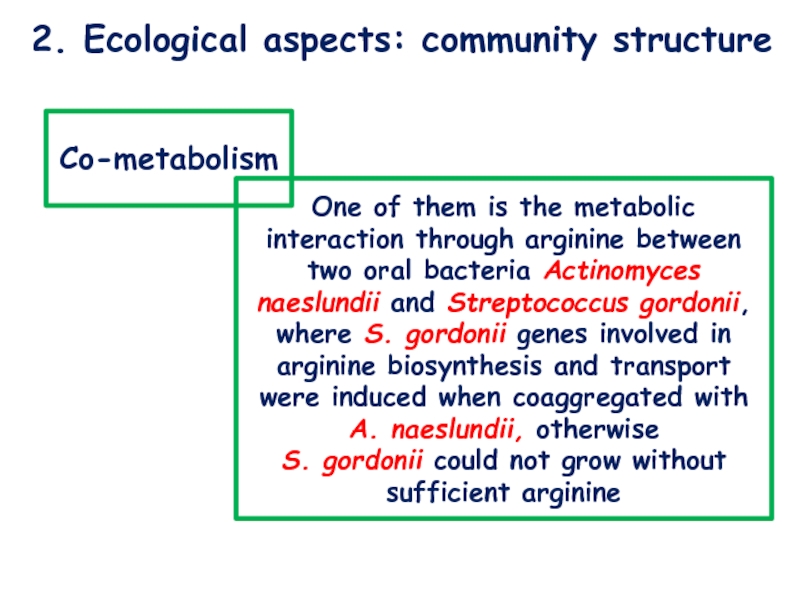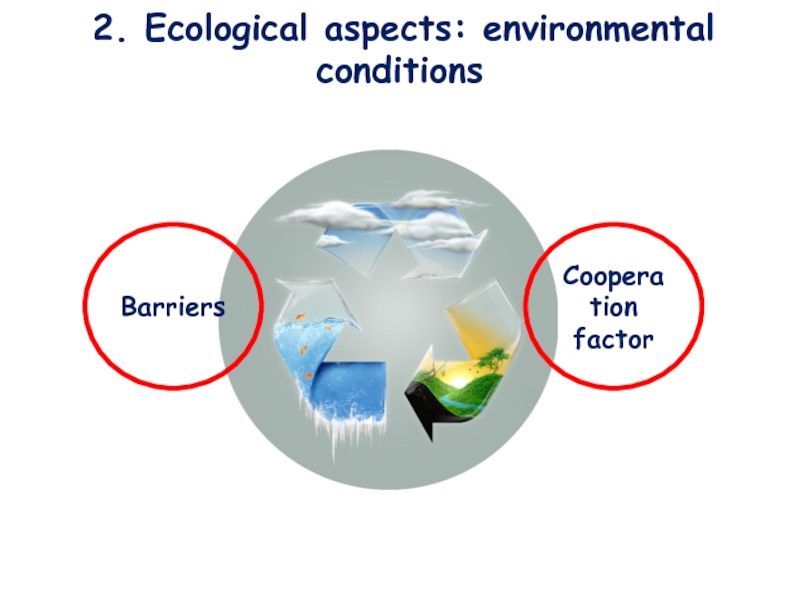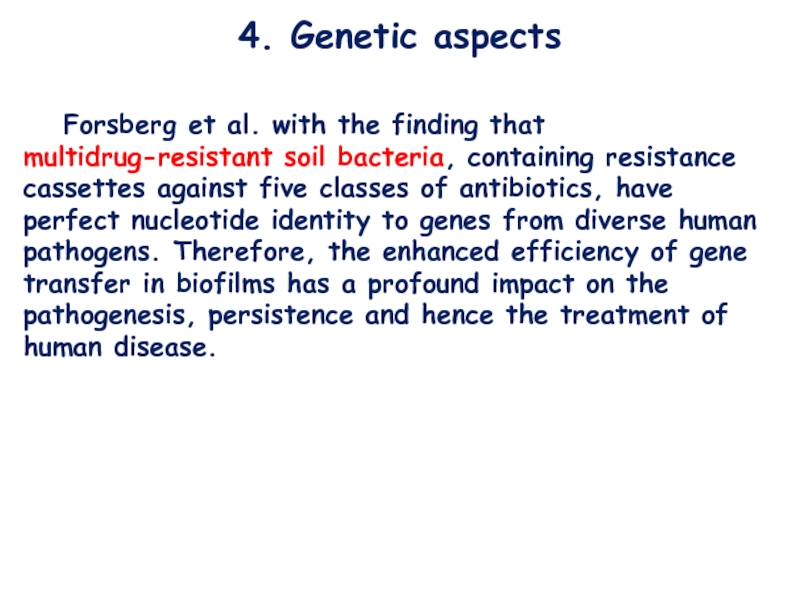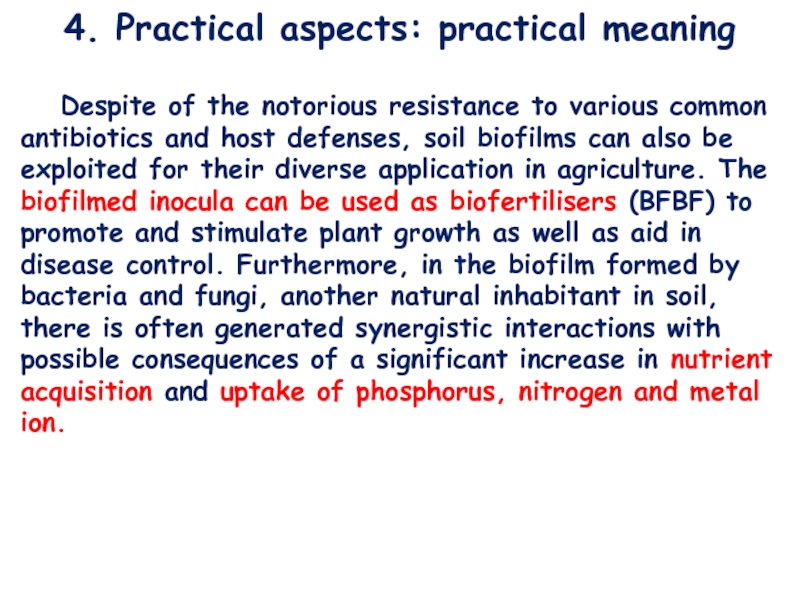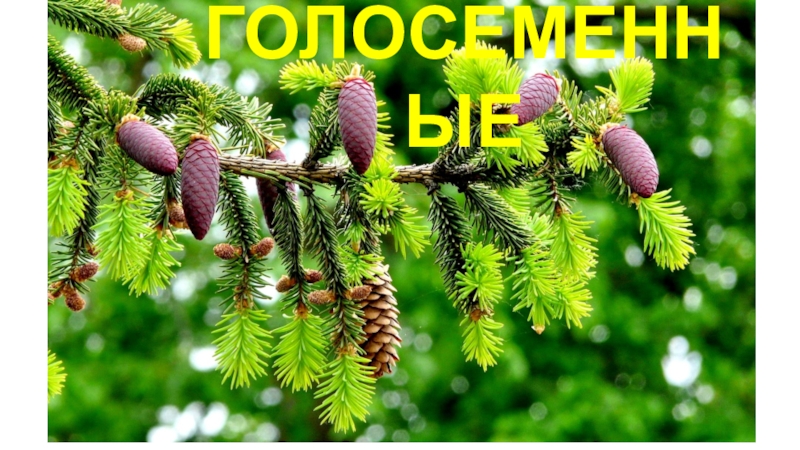Разделы презентаций
- Разное
- Английский язык
- Астрономия
- Алгебра
- Биология
- География
- Геометрия
- Детские презентации
- Информатика
- История
- Литература
- Математика
- Медицина
- Менеджмент
- Музыка
- МХК
- Немецкий язык
- ОБЖ
- Обществознание
- Окружающий мир
- Педагогика
- Русский язык
- Технология
- Физика
- Философия
- Химия
- Шаблоны, картинки для презентаций
- Экология
- Экономика
- Юриспруденция
S yn e rg i sm
Содержание
- 1. S yn e rg i sm
- 2. Content General aspects (importance)Ecological aspects Metabolic aspects Physiological aspects Genetic aspects Practical aspects
- 3. 1. General aspects Synergism is when
- 4. 2. Ecological aspects: diversity intraspecies)
- 5. 2. Ecological aspects: diversity
- 6. 2. Ecological aspects: Examples Algae BacteriaOrganic compounds CO2Syner-gism O2
- 7. 2. Ecological aspects: community structure Coagregation
- 8. 2. Ecological aspects: community structure Cross
- 9. 2. Ecological aspects: community structure Co-metabolism
- 10. 2. Ecological aspects: environmental conditionsBarriers Cooperation factor
- 11. 2. Ecological aspects: abiotic impact Chang et
- 12. 2. Ecological aspects: evolutionary strategies Microbes
- 13. 3. Metabolic aspects: mechanism of metabolic interaction For
- 14. 3. Metabolic aspectsLIGNOCELLULOSE AS CARBON SOURCE PROMOTES BACTERIALSYNERGISM AND REDUCES ANTAGONISMby Yijie DengMay 2016
- 15. 3. Metabolic aspects1. Bacterial synergism occurred frequently
- 16. 4. Physiological aspects: regulation of growth These improved
- 17. 4. Physiological aspectsIn gram-negative bacteria, acylated homoserine
- 18. 4. Physiological aspectsAnother quorum sensing signal-diffusible signal
- 19. 4. Genetic aspects Forsberg et al. with the
- 20. 4. Genetic aspects: mechanism for gene transfer For
- 21. 4. Practical aspects: practical meaning Despite of the
- 22. 4. Practical aspects: practical meaning The fungal-bacterial biofilms
- 23. 4. Practical aspects: practical meaning Pseudomonas aeruginosa PAO1
- 24. CONCLUSION Wheeler states in an article on
- 25. THANKS FOR ATTENTION!
- 26. Скачать презентанцию
- ВКонтакте
- РћРТвЂВВВВВВВВнокласснРСвЂВВВВВВВВРєРСвЂВВВВВВВВ
- РњРѕР№ Р В Р’В Р РЋРЎв„ўР В Р’В Р РЋРІР‚ВВВВВВВВРЎР‚
Слайды и текст этой презентации
Слайд 2Content
General aspects (importance)
Ecological aspects
Metabolic aspects
Physiological aspects
Genetic
aspects
Слайд 3 1. General aspects
Synergism is when two or more
agents or structures (for example, you and your friend) work
together in order to accomplish a goal quicker than you would on your own. It is different from mutualism because it is not an obligatory interaction. This is because each member can produce its own food individually. It is a loose relationship because, one member can be replaced by another microorganism. It allows microbial population to perform such function which it may not be produced individually.
For example, reproducible mixed-species biofilm comprising Pseudomonas aeruginosa, Pseudomonas protegens and Klebsiella pneumonia was more resistant to the antimicrobials sodium dodecyl sulfate and tobramycin than the single-species biofilms.
Слайд 7 2. Ecological aspects: community structure
Coagregation
E.coli 0157:H7 ->
Pseudomonas aeruginosa (persist in capillary flow cell which requires the
colonizing partner P.aeruginosa)In addition,
coaggregation confers cross-species protection of anaerobic species from oxygen and of susceptible
species from antimicrobials
Слайд 8 2. Ecological aspects: community structure
Cross species protection
Staphylococcus
epidermidis RP62A could inhibit fluconazole penetration and conversely, the presence
of Candida albicans in this biofilm appeared to protect the slime-negative Staphylococcus against vancomycinСлайд 9 2. Ecological aspects: community structure
Co-metabolism
One of them
is the metabolic interaction through arginine between two oral bacteria
Actinomyces naeslundii and Streptococcus gordonii, where S. gordonii genes involved inarginine biosynthesis and transport were induced when coaggregated with A. naeslundii, otherwise
S. gordonii could not grow without sufficient arginine
Слайд 11 2. Ecological aspects: abiotic impact
Chang et al. provided the
direct evidence that alginate production by Pseudomonas putida contributed to
a hydrated microenvironment which protected residents from water-limiting stresses . Moreover, biofilm has a great capacity for heavy metal biosorption and toxic compound degradation which has a significant impact on bioremediation. Additionally, the widespread exposure to antibiotics makes biofilm formation more favorable in soil.Walker et al. suggested that upon root colonization, Pseudomonas aeruginosa gained resistance against root-secreted antibiotics by forming a biofilm.
Habitat: soil-> abiotic factor- water desiccation
Слайд 12 2. Ecological aspects: evolutionary strategies
Microbes have developed strategies
which enable them to survive:
Survival and growth by structural adaptation.
eg alkaline soda lakes, saline lakes, hot springs, desert soils.Nutrient adaptation in case of r strategists & k strategists
Слайд 133. Metabolic aspects: mechanism of metabolic interaction
For example the relationship
between Enterococcus faecalis and Lactobacillus arabinosus. E. faecalis requires folic
acid for growth whereas L. arabinosus requires phenyl-alanine for good growth. When grown in medium that does not have any of the required nutrient E. faecalis supplies phenyl-alanine while L. arabinosus supplies folic acid required. Hence they have cooperated to produce their required nutrients which encourage their rapid growth rate.Population 1
Population 2
Compound A
Compound B
utilize
utilize
Compound C
Слайд 143. Metabolic aspects
LIGNOCELLULOSE AS CARBON SOURCE PROMOTES BACTERIAL
SYNERGISM AND REDUCES
ANTAGONISM
by Yijie Deng
May 2016
Слайд 153. Metabolic aspects
1. Bacterial synergism occurred frequently in lignocellulose medium
but never in glucose medium, suggesting that bacterial synergistic growth
was dependent on the structural complexity of the carbon source.2. When glucose is the only carbon source and in a limited amount, bacteria compete for the labile substrate resulting in the predominance of antagonistic interactions.
Слайд 164. Physiological aspects: regulation of growth
These improved biofilm-associated fitnesses mentioned
above suggest that the preferred mode of bacterial growth is
in a biofilm. By being encased in the recalcitrant matrix, the bacteria grow in a relatively stable environment called microbial homeostasis, reflected not by the characteristics of resident individuals but by the balance imposed by the numerous microbial interactions, including examples of quorum sensing (QS) and horizontal gene transfer (HGT). By means of quorum sensing, the sessile cells in the biofilms can “talk” to each other. Due to the increased population density and constrained diffusion, the quorum sensing molecules are concentrated. Once reaching a threshold level, these quorum sensing molecules modulate the transcription of certain genes and trigger phenotypic changes, including swarming motility, biofilm formation and the production of virulence factors.Слайд 174. Physiological aspects
In gram-negative bacteria, acylated homoserine lactones (AHLs) are
the most intensively investigated signal molecules and have been well
described in Pseudomonas aeruginosa. There is also report that two different chemical languages: N-acyl homoserine lactones (AHLs) and cis-2-unsaturated fatty acids were utilized to control biofilm formation and virulence in Burkholderia cepacia complex.The signaling communication in multispecies biofilms are mainly mediated by autoinducer 2 (AI-2), which is synthesized by the enzyme LuxS and found in both gram-negative and –positive bacteria. AI-2 has been shown to promote the biofilm formation of two oral bacteria Actinomyces naeslundii T14V and Streptococcus oralis 34. Whereas, AI-2 of Fusobacterium nucleatum was reported to differentially regulate biofilm growth of two oral streptococci by producing a stimulatory effect on Streptococcus gordonii and an inhibitory effect on S. oralis.
Слайд 184. Physiological aspects
Another quorum sensing signal-diffusible signal factor (DSF), identified
in Burkholderia cenocepacia and Pseudomonas aeruginosa, was reported recently to
be involved in interspecies communications by altering biofilm formation, architecture and resistance to antibiotic.Слайд 194. Genetic aspects
Forsberg et al. with the finding that multidrug-resistant
soil bacteria, containing resistance cassettes against five classes of antibiotics,
have perfect nucleotide identity to genes from diverse human pathogens. Therefore, the enhanced efficiency of gene transfer in biofilms has a profound impact on the pathogenesis, persistence and hence the treatment of human disease.Слайд 204. Genetic aspects: mechanism for gene transfer
For example, lateral gene
transfer of AHL synthase gene could facilitate cross talk between
Burkholderia spp. and Pseudomonas spp., whereas lateral gene transfer of ring-hydroxylating-dioxygenase (RHD) gene may improve aromatics’degradation by spreading the gene among different speciesBurmølle et al. reported a conjugative plasmid pOLA52, which confers resistance to olaquindox and other antimicrobial agents through a multidrug efflux pump, can also promote biofilm formation in Escherichia coli. Also, there is example that transfer efficiency of plasmids in Pseudomonas putida biofilm depended on the type of antibiotics, suggesting biofilm bacteria may “sense” antibiotics to which they are resistant and enhance the spread of that resistance. Overall, efficient gene transfer is both the cause and consequence of biofilm development.
Слайд 214. Practical aspects: practical meaning
Despite of the notorious resistance to
various common antibiotics and host defenses, soil biofilms can also
be exploited for their diverse application in agriculture. The biofilmed inocula can be used as biofertilisers (BFBF) to promote and stimulate plant growth as well as aid in disease control. Furthermore, in the biofilm formed by bacteria and fungi, another natural inhabitant in soil, there is often generated synergistic interactions with possible consequences of a significant increase in nutrient acquisition and uptake of phosphorus, nitrogen and metal ion.Слайд 224. Practical aspects: practical meaning
The fungal-bacterial biofilms (Penicillium frequentans and
Bacillus mycoides) resulted in a 14-fold increase in the biodegradability
of degradable polyethylene by P. frequentans. A bradyrhizobial-fungal biofilm showed nitrogenase activity, whereas the bradyrhizobial strain alone DID NOT, which improved the shoot and root growth, nodulation and nitrogen accumulation of soybean and directly contributed to soil nitrogen fertility in the long term.Additionally, anaerobic degradation of complex organic matter into methane and carbon dioxide requires the progressive action of numerous species of microorganisms. Biofilms can provide such an ideal environment for the interaction of these metabolically cooperative organisms, owing to their highly organized structure enhancing the nutrient availability as well as removal of potentially toxic metabolites.
